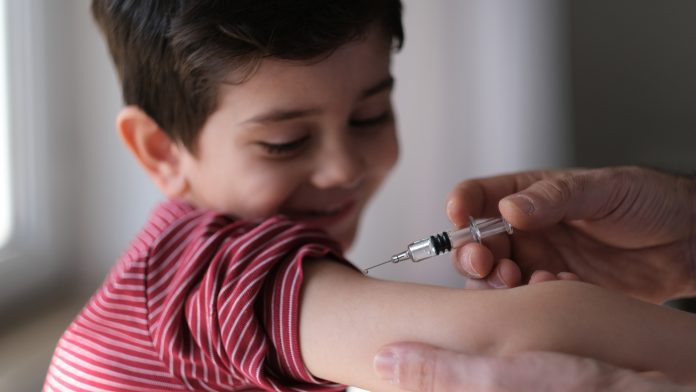
New data from WHO and the CDC confirms that almost 40 million children worldwide are becoming dangerously susceptible to the measles virus.
The measles virus spreads easily and can cause a range of symptoms. The initial symptoms include a high temperature, a runny nose, sneezing and cough; the virus will then cause white spots in the mouth and a prominent rash. The best way to reduce the risk of measles is the MMR vaccine which is offered to all children in the UK.
Following the COVID-19 pandemic, measles virus vaccination coverage has declined. In 2021, a record high of nearly 40 million children missed a measles vaccine dose: 25 million children missed their first dose and an additional 14.7 million children missed their second dose, a joint publication by the World Health Organization (WHO) and the United States Centers for Disease and Prevention reported.
Measles virus is a global health threat
In 2021, around nine million cases and 128,000 deaths resulted from a measles virus infection. Furthermore, 22 countries experienced large and disruptive outbreaks, worsened by COVID-19, weakened surveillance and reduced vaccine coverage. The outbreaks persisted into 2022.
“The paradox of the pandemic is that while vaccines against COVID-19 were developed in record time and deployed in the largest vaccination campaign in history, routine immunization programmes were badly disrupted, and millions of kids missed out on life-saving vaccinations against deadly diseases like measles,” said WHO Director-General Dr Tedros Adhanom Ghebreyesus. “Getting immunization programmes back on track is absolutely critical. Behind every statistic in this report is a child at risk of a preventable disease.”
The current state of measles vaccination coverage is worrying. Coverage of 95% or greater of two doses of measles-containing vaccine is needed to create herd immunity. Currently, only 81% of children have received their first measles vaccine, and only 71% of children received their second vaccine globally. These figures are the lowest global coverage rates reported since 2008.
Action is needed worldwide
The measles virus quickly spread across communities and international borders, highlighting the need to control the spread. No WHO region has achieved and sustained measles elimination. Since 2016, only ten countries that had previously eliminated measles experienced outbreaks and reestablished transmission.
“The record number of children under-immunized and susceptible to measles shows the profound damage immunization systems have sustained during the COVID-19 pandemic,” said CDC Director Dr Rochelle P Walensky. “Measles outbreaks illustrate weaknesses in immunization programs, but public health officials can use outbreak response to identify communities at risk, understand causes of under-vaccination, and help deliver locally tailored solutions to ensure vaccinations are available to all.”
In 2021, nearly 61 million measles vaccine doses were postponed or missed due to COVID-19 delays in 18 countries. The CDC and WHO are urging collaboration from all partners at global, regional, national, and local levels to prioritise efforts to find and immunise all unprotected children, including those who were missed during the last two years.










